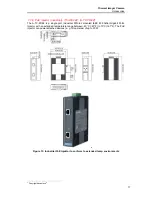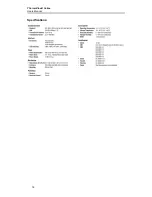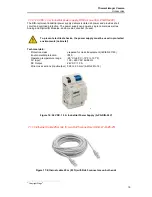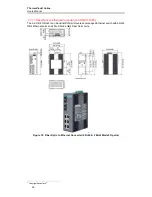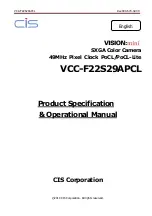
ThermoView® Series
Users Manual
8
4.2. Measurement of Infrared Temperatures
Every object emits an amount of infrared radiation (IR) according to its surface temperature.
The intensity of the infrared radiation changes with the temperature of the object. Depending
on the material and surface properties, the emitted radiation lies in a wavelength spectrum of
approximately 1 to 20 µm. The intensity of the infrared radiation (heat radiation) is dependent
on the material. For many substances, this material-dependent constant is known. It is referred
to as
emissivity value
. See appendix 9.1 Typical Emissivity Values on page 39.
Infrared cameras are optical-electronic sensors. These sensors can detect radiation sources of
heat. Infrared cameras consist of a lens, spectral filter, sensor array, and an electronic signal
processing unit. The task of the spectral filter is to select the wavelength spectrum of interest.
The sensor converts the infrared radiation into an electrical signal. The connected electronics
processes this signal for further analysis. The intensity of the emitted infrared radiation is
thereby used to determine the temperature of the target. Since the intensity of the infrared
radiation is dependent on the material, the appropriate emissivity can be selected on the sensor.
The biggest advantage of the infrared camera is its capability for the contactless determination
of target surface temperatures. Consequently, surface temperatures of moving or hard to reach
objects can be easily measured.
4.3. Emissivity of Target Object
For accurate surface temperature readings, the IR camera must be set to the appropriate
emissivity value for the target material. Determine the emissivity of the target object, as
described in the appendix. When measuring materials with low emissivity, the results could be
effected by interfering infrared radiation from background objects (such as heating systems,
flames, fireclay bricks, etc. near to or behind the target object). This type of problem can occur
when measuring reflective surfaces and very thin materials, such as plastic films and glass.
This error can be reduced to a minimum if care is taken during installation, and the camera is
shielded from reflected infrared radiation.
5. Installation
5.1. Ambient Temperatures
Without water cooling, the ThermoView
®
camera is designed for ambient operating
temperatures between -15 to 50°C (5 to 122°F). With water cooling equipment, it can be used
in environments at higher temperatures.
5.2. Environment
The pure ThermoView® infrared camera without any attached external lens complies with the
international protection standard IP67.
Please note, that the international protection class of IP67 must be downgraded to IP54, if an
external add-on lens is attached. Such lenses are not watertight or splash-proof and don’t resist
harsh environment conditions.
Note that effectiveness against splashing under IP67 is possible only, if terminal caps are in
place and all external connectors are connected and comply to IP67 too. To retain the given
IP67 protection class, please inspect periodically all seals of the waterproof connectors and end
caps.
5.3. Electrical Interference
To minimize electrical or electromagnetic interference, follow these precautions:
•
Mount the unit as far away as possible from possible sources of interference such as
motorized equipment producing large step load changes!
•
Ensure a fully insulated installation of the unit (avoid ground loops!).
•
Make sure the shield wire in the unit cable is earth grounded at one location!
























